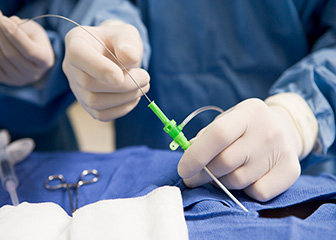Summary

| Quick Facts: Cardiovascular Technologists and Technicians and Vascular Technologists | |
|---|---|
|
$49,410 per year
$23.75 per hour |
|
| Associate’s degree | |
| None | |
| None | |
| 49,400 | |
| 29% (Much faster than average) | |
| 14,500 | |
What Cardiovascular Technologists and Technicians and Vascular Technologists Do
Cardiovascular technologists and technicians and vascular technologists use imaging technology to help physicians diagnose cardiac (heart) and peripheral vascular (blood vessel) ailments in patients. They also help physicians treat problems with cardiac and vascular systems, such as blood clots.
Work Environment
Cardiovascular technologists and technicians and vascular technologists work in healthcare facilities, which must be sanitary.
How to Become a Cardiovascular Technologist or Technician or Vascular Technologist
There are several ways to become a cardiovascular technologist or technician or vascular technologist. Although some technologists and technicians are trained on the job, most get an associate’s degree. Many employers also require professional certification.
Pay
The median annual wage of cardiovascular technologists and technicians and vascular technologists was $49,410 in May 2010.
Job Outlook
Employment is expected to grow by 29 percent from 2010 to 2020, much faster than average for all occupations. As imaging technology evolves, medical facilities will use it to replace more invasive, costly procedures.
Similar Occupations
Compare the job duties, education, job growth, and pay of cardiovascular technologists and technicians and vascular technologists with similar occupations.
O*NET
O*NET provides comprehensive information on key characteristics of workers and occupations.
Contacts for More Information
Learn more about cardiovascular technologists and technicians and vascular technologists by contacting these additional resources.








